President’s message: Transparency in the race to net zero
Reliable Controls president Tom Zaban explores how we can help you foster transparency in the race to net zero.




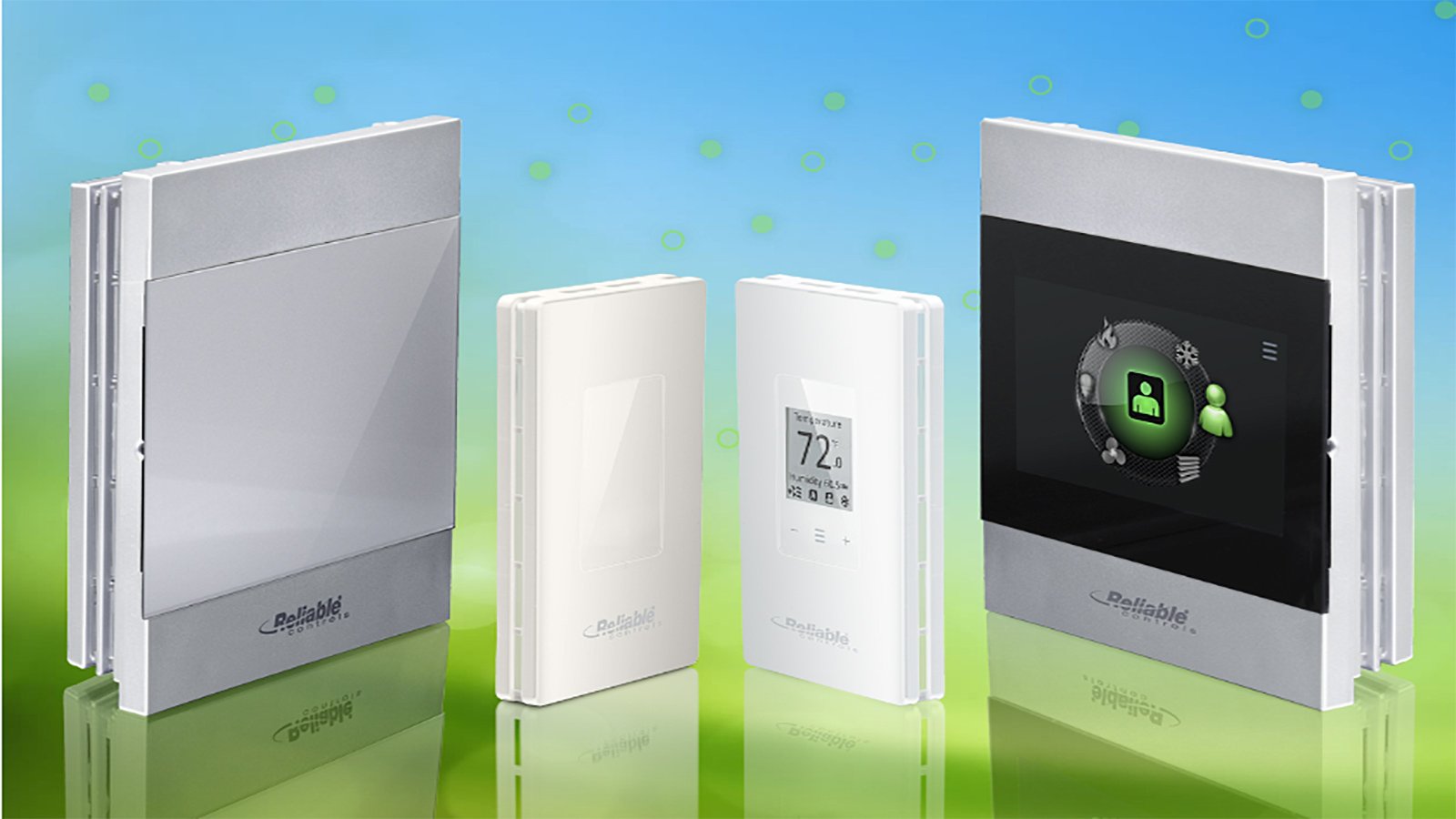
According to the World Green Building Council, we spend 90 percent of our time indoors. Given that statistic, it’s clear the quality of the air we breathe in buildings can dramatically impact our health and well-being. At Reliable Controls we believe sustainable buildings are a key component to reducing the health and environmental impacts of indoor and outdoor air pollution.
Did you know some of the chemicals used in common office products and building materials can have an adverse effect on people’s health? Volatile organic compounds (VOCs) are gases emitted into the air from everyday products or processes. Some VOCs are harmful by themselves; some react with other gases to form pollutants in the air.
For example, formaldehyde, a colorless gas with a sharp, bitter smell, is one of the most common VOCs found in building materials such as plywood, particle board, glues, certain types of foam insulation, and even drapes and fabrics. VOCs are also emitted when fuels such as gas, wood, and kerosene are burned. In addition, many personal care and office products, including perfume and cosmetics, air fresheners, cleaners, varnishes, and printers, release VOCs (Figure 1).
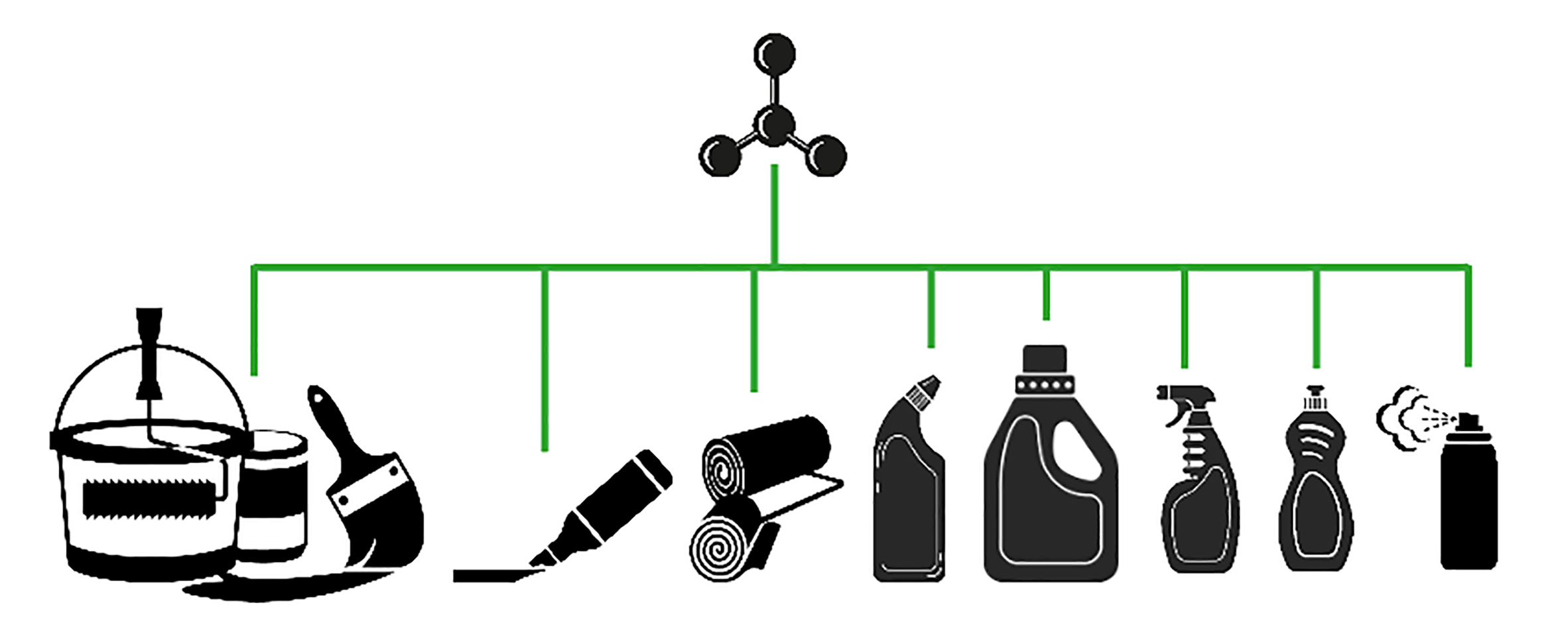
Figure 1: Examples of products that emit VOCs.
VOCs can cause eye, nose, and throat irritation; headaches; breathing problems; and even cancer. They can disrupt communication between plants and between plants and animals. Anthropogenic VOCs are regulated by law, especially indoors, where concentrations are the highest. Harmful VOCs typically are not acutely toxic but have compounding long-term health effects.1
Indoor concentrations of VOCs are significantly higher than outdoors. New products and building materials as well as improved insulation for energy efficiency have resulted in increased concentrations of VOCs in homes and buildings. One step you can take to significantly reduce your intake of harmful gases is to use effective VOC measurement tools.
If the windows and doors in your home or office are normally closed, the potential for adverse health effects due to high VOC concentrations is increased.2 Monitoring the level of VOCs in your space with dedicated sensors and increasing the amount of fresh air available will promote awareness and improve air quality. Make sure the ventilation systems in your building are working effectively to reduce the VOCs regularly produced by personal care products and office equipment.
Global consensus on the impact of VOCs has prompted governmental organizations in countries such as Australia, Finland, Germany, Hong Kong, and Japan to issue guidelines for total volatile organic compound (TVOC) standards of indoor air quality. TVOC refers to the total concentration of VOCs present simultaneously in the air and is a practical measure of evaluating indoor environments for contamination. The German Federal Environment Agency defines TVOC levels as shown in Table 1. The recommendations are based on the results of a large number of controlled exposure studies that established a relationship between increased TVOC levels and adverse health effects.
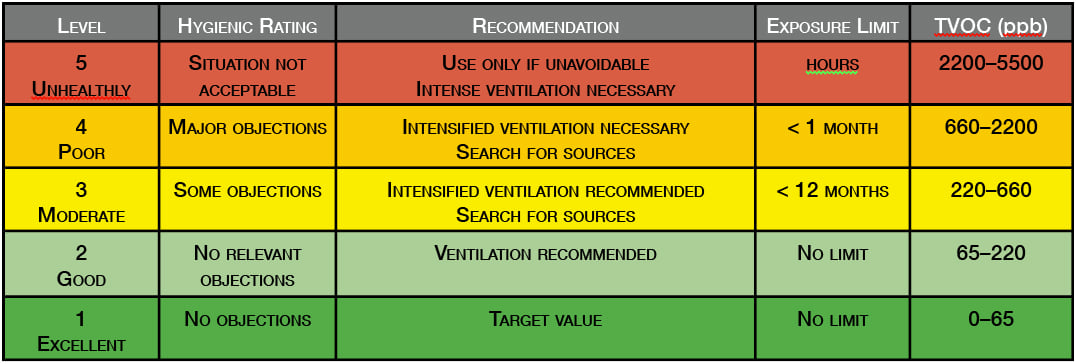
Table 1: German Federal Environment Agency TVOC guidelines.3
Air purification and cleaning devices equipped with suitable filters are also an effective way to reduce the concentration of VOCs in indoor air, particularly in locations where ventilation with outside air is not appropriate. Most national governmental bodies provide guidelines for avoiding and removing VOC sources in indoor environments.4 You can achieve proper ventilation with an automatic demand-controlled system equipped with suitable sensors.
The optional VOC sensor on the latest SMART-Sensor™, SMART-Sensor EPD, MACH-ProView™, and MACH-ProView LCD controllers (Figure 2) provides a reliable solution to measure harmful gases. VOC is a complementary measurement to CO2 that detects a wide array of chemical compounds, both natural and humanmade, and provides better indoor air quality measurement than CO2 alone. Achieve better health by incorporating these Reliable Controls devices into your next build or retrofit.
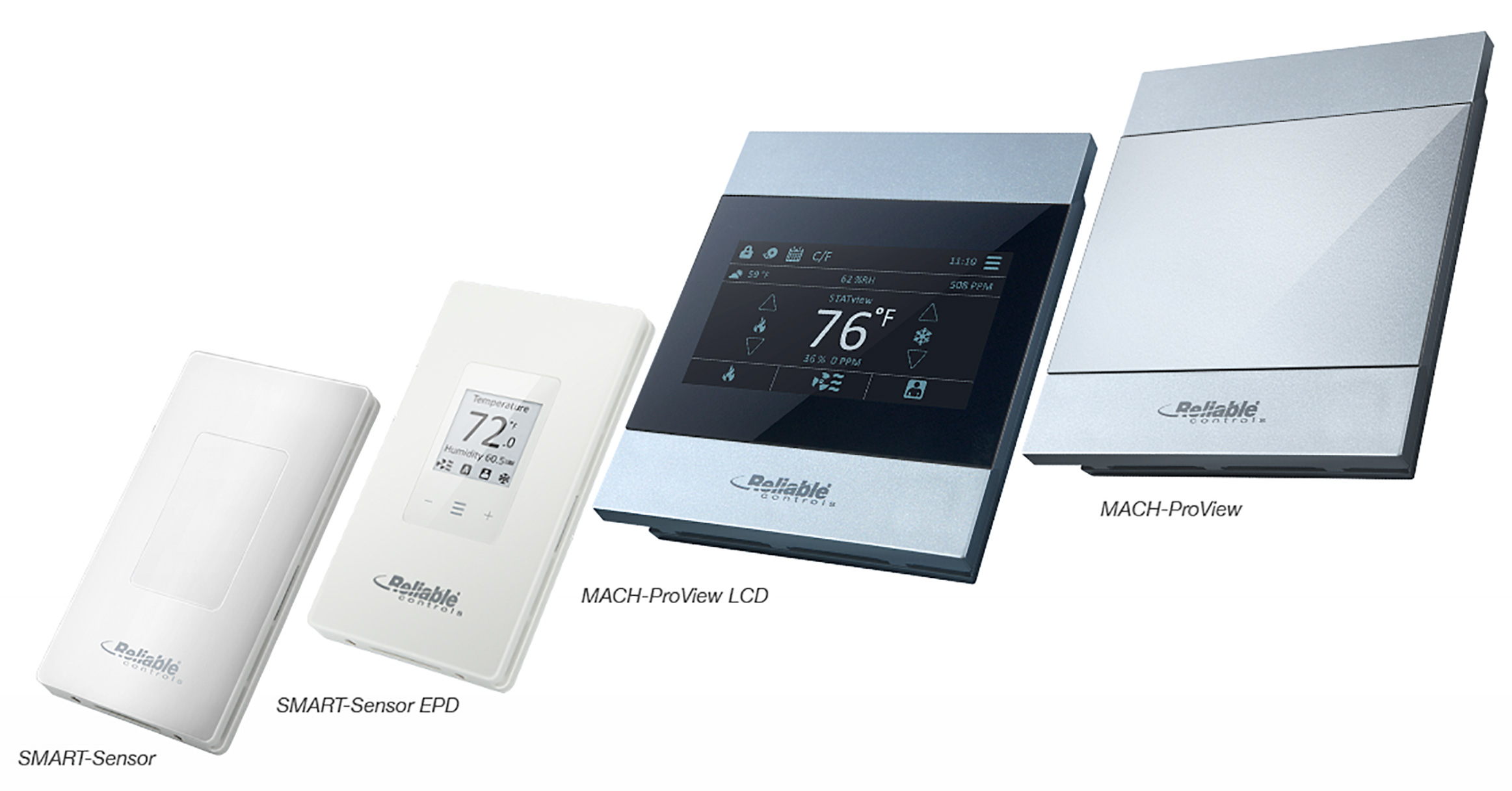
Figure 2: Reliable Controls products with an optional VOC sensor.
| MACH-ProView VOC sensor features: | SMART-Sensor VOC sensor features: |
|
|
|
|
|
|
|
|
You can use both the CO2 and VOC sensors to measure indoor air quality, but they are not interchangeable. Both sensors provide important benefits but measure different things.
The CO2-sensing technology in the SMART-Sensor and MACH-ProView is a nondispersive infrared sensor—a spectroscopic sensor that uses an infrared source, an infrared filter, and an infrared detector (Figure 3). It is stable and not subject to the short-term drift found in other air-quality sensors.
The CO2 sensor is designed to detect and measure CO2 in the surrounding air and to control the ventilation rate in occupied spaces. People are the primary source of CO2 in indoor air. Outside air CO2 levels tend to be relatively low and constant. You can measure CO2 indoors to determine whether a room or building is occupied. In other words, higher levels of CO2 correspond to more people inside and therefore the rate of air exchange required.
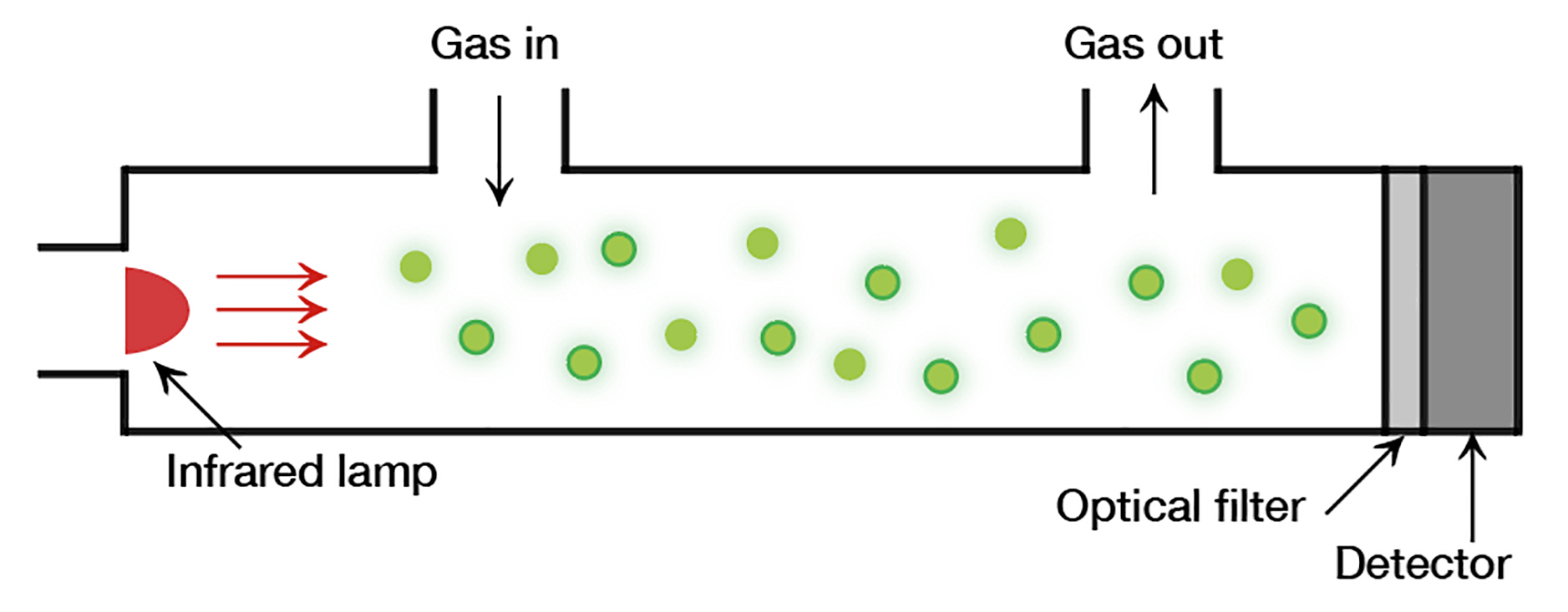
Figure 3: Nondispersive infrared sensor operation.
As a control, a CO2 sensor can activate an alarm or mitigation strategy such as filters or ventilation. Because CO2 is an inorganic compound, it is therefore not a VOC and does not cause an air-quality sensor to react. You can apply both a CO2 sensor and a VOC sensor to a demand-controlled ventilation strategy.
Unlike a CO2 sensor, a VOC sensor does not indicate the rate of ventilation needed but instead the concentration of VOCs in the air. As such, it does not necessarily indicate the level of VOC contaminants is harmful but denotes a general change in their concentration. This makes VOC sensors a better solution in applications where unusual concentrations of these harmful gases may be periodically present.
A building manager will see energy savings with CO2 sensing, as ventilation is based on actual occupancy rather than the design occupancy of the space. When pollutant loads are low, ventilation rates can be reduced, which may occur during or after occupied hours. Whereas a CO2 sensor can be monitored to reduce ventilation during unoccupied periods, a VOC sensor may maintain ventilation rates during unoccupied periods if a significant pollutant level is detected. You can also use VOC sensors to detect high VOC concentrations that might occur when special equipment is used or when potent chemicals from cleaners are released into the air (Figure 4).
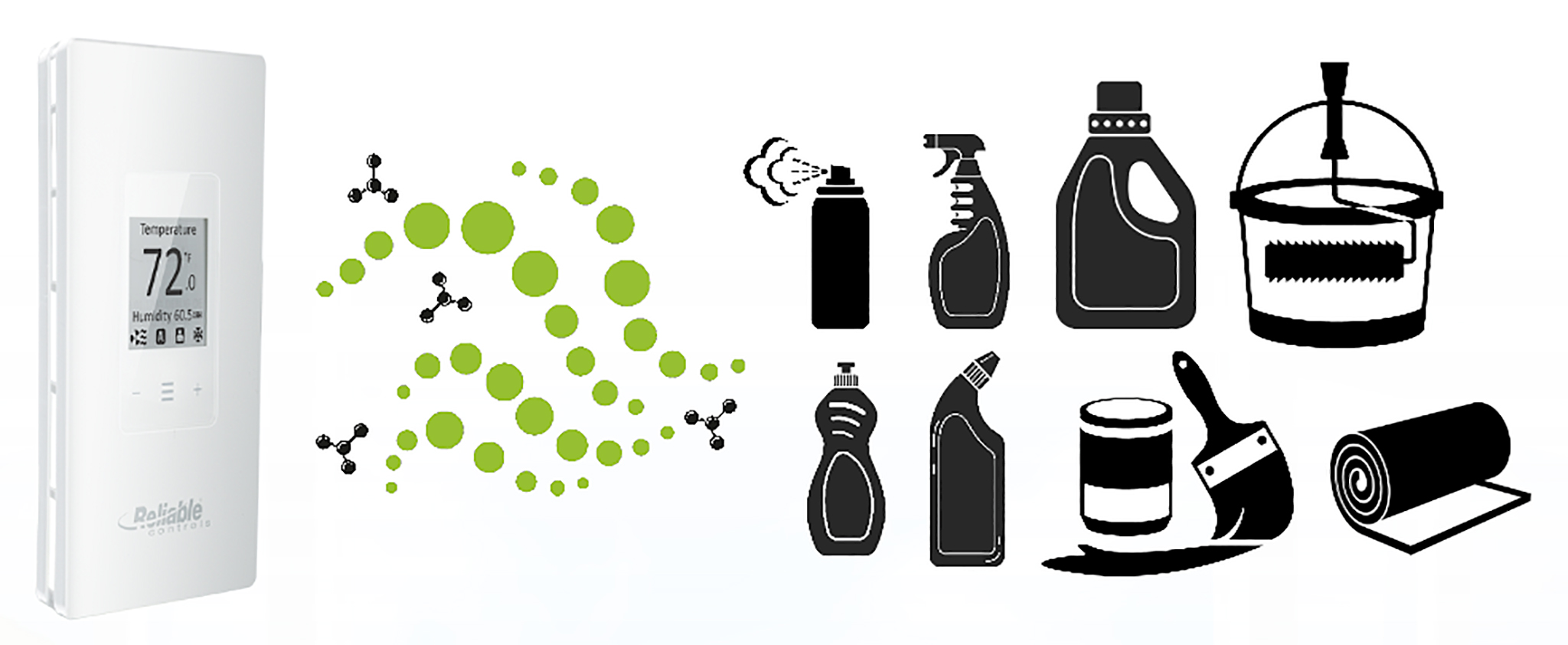
Figure 4: The VOC sensor in the SMART-Sensor EPD detects VOCs from various everyday products.
The VOC sensor used in the SMART-Sensor and MACH-ProView is metal-oxide-based for indoor air quality applications and can be ordered with or without a CO2 sensor (Figure 5). The sensor has an I2C interface in a small, dual-flat, no-leads package (2.45 X 2.45 X 0.9 mm3) and a dust and water protection membrane, making it easy to integrate into Reliable Controls devices.
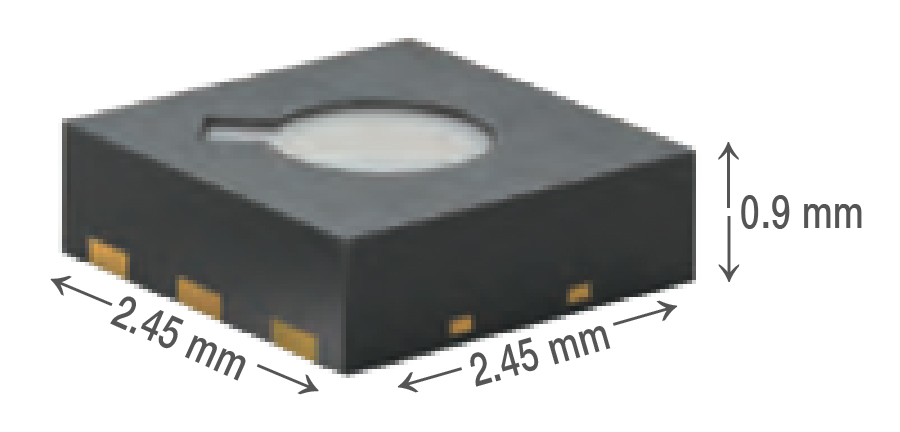
Figure 5: VOC sensor in the SMART-Sensor and MACH-ProView.
You can depend on technologies from Reliable Controls to monitor potentially harmful odors, fumes, and other air contaminants. Whether you need to measure particulate matter, relative humidity, temperature, CO2, or VOCs, Reliable Controls has sensor options to suit your needs. Create a smarter building environment that provides relevant air-quality measurement and increases energy efficiency with VOC sensing.
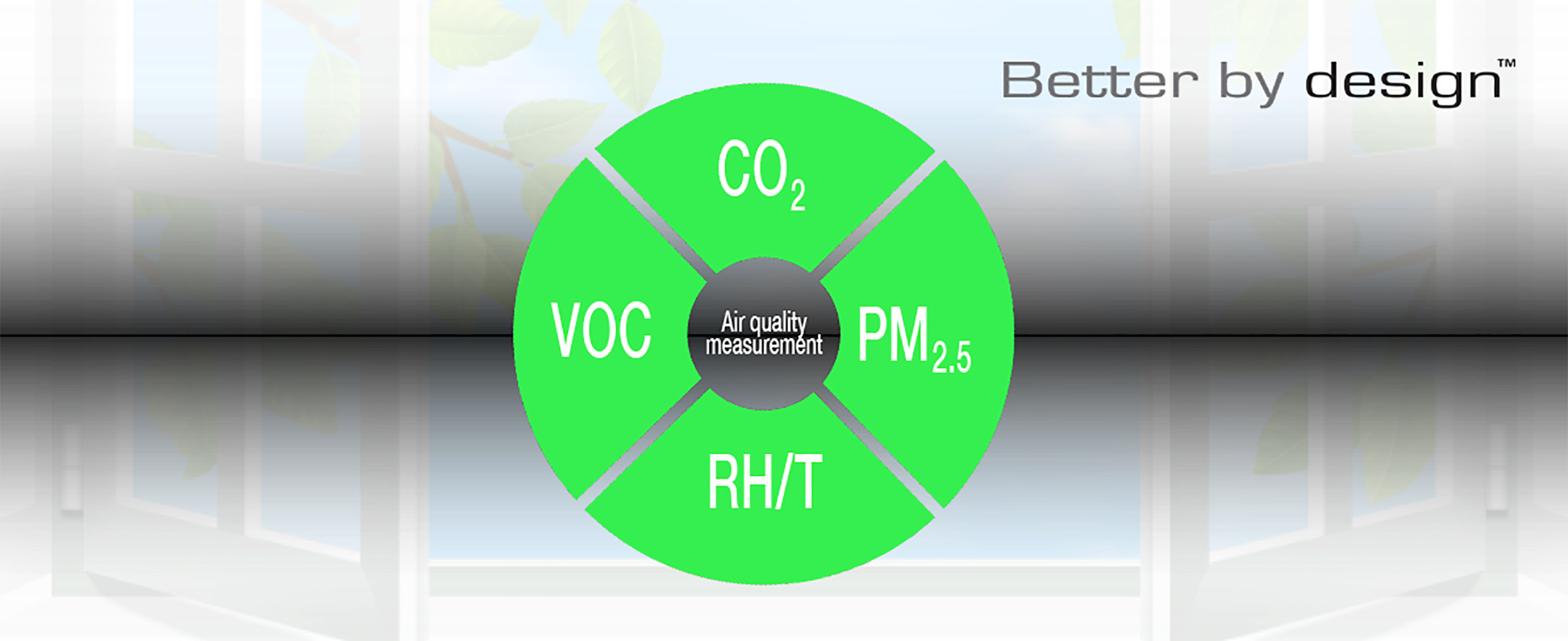
1 Scented products emit a bouquet of VOCs - https://www.ncbi.nlm.nih.gov/pmc/articles/PMC3018511/
The 10 Most Common VOCs: Are They in Your Home? - https://freshome.com/10-most-common-vocs/
2 Results of studies of VOCs in schools -
Report No 19 TVOC in Indoor Air Quality Investigations - Section 4 (pg 13): VOCs and Health Effects: Exposure - Rresponse Relationships -
http://www.inive.org/medias/ECA/ECA_Report19.pdf
Volatile Organic Compounds’ Impact on Indoor Air Quality - https://www.epa.gov/indoor-air-quality-iaq/volatile-organic-compounds-impact-indoor-air-quality
Health Effects of VOCs on humans - http://best-inspection.com/posts/health-effects-of-vocs-on-humans/
Indoor Air Facts No.4 Sick Building Syndrome - https://www.epa.gov/sites/production/files/2014-08/documents/sick_building_factsheet.pdf
Berkeley Labs: Introduction to VOCS and Health - https://iaqscience.lbl.gov/introduction-vocs
3 Bundesgesundheitsblatt–Gesundheitsforschung Gesundheitsschutz 2007, 50:990–1005, Springer Medizin Verlag 2007. (DOI 10.1007/s00103-007-0290-y)
4 World Health Organization (WHO) Europe Guidelines for Indoor Health: http://www.euro.who.int/__data/assets/pdf_file/0009/128169/e94535.pdf
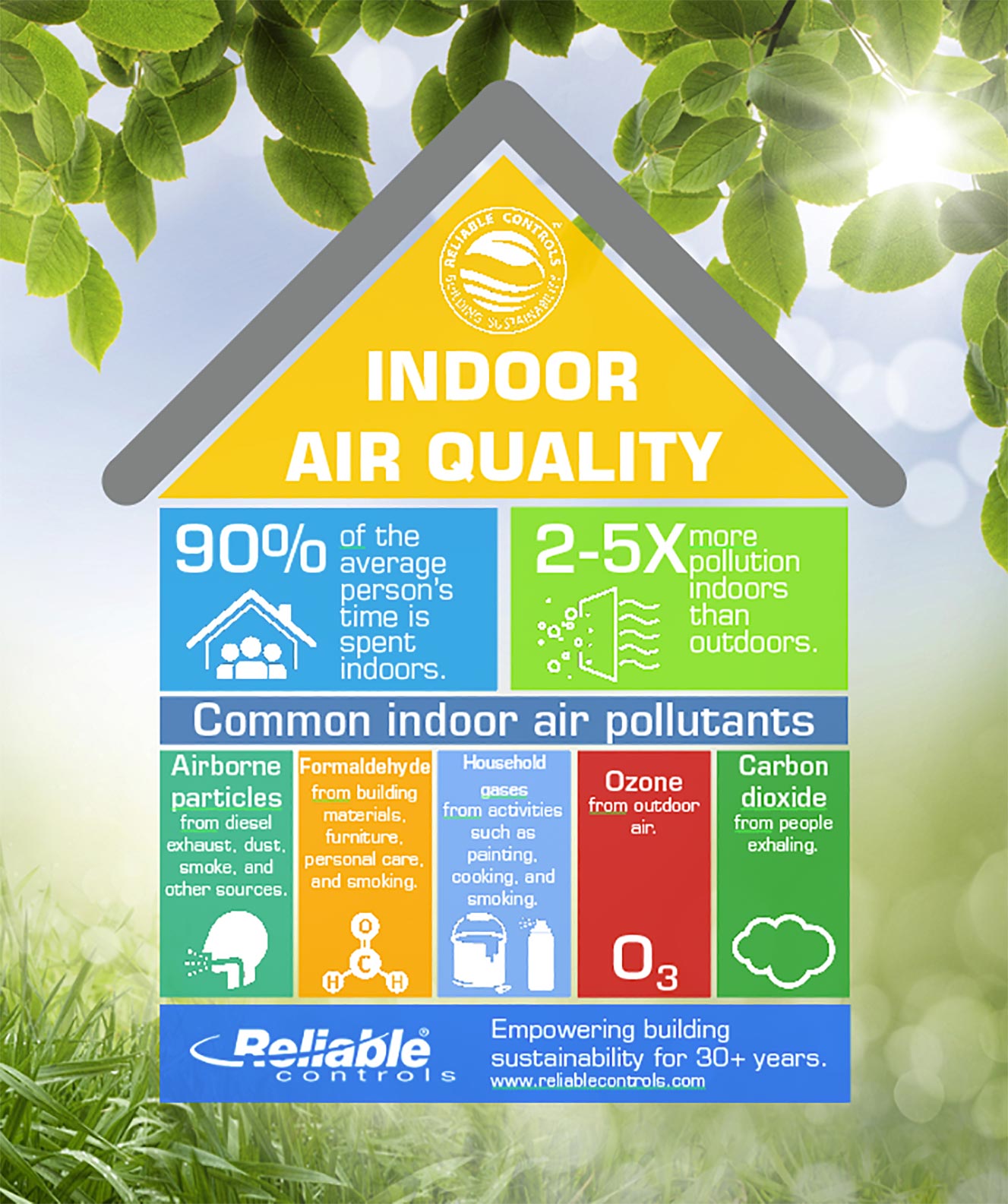

Reliable Controls president Tom Zaban explores how we can help you foster transparency in the race to net zero.

Reliable Controls president Tom Zaban reflects on 30 years of the BACnet protocol.

Celebrating nearly 25 years of RC-Studio, the backbone of our suite of building automation tools.

Learn how Reliable Controls promotes a circular economy, starting with design choices.

Learn about encouraging outcomes of the UN Climate Change Conference and how building automation plays a critical role in achieving global decarbonization goals.

What does a Zamboni have in common with an arena's ventilation system?

When every second matters, players should be set up for success. The building automation system can do just that.

Discover particulate matter. Why does it matter, and how can you measure it?